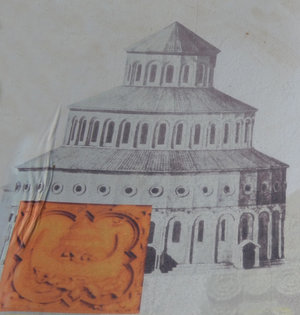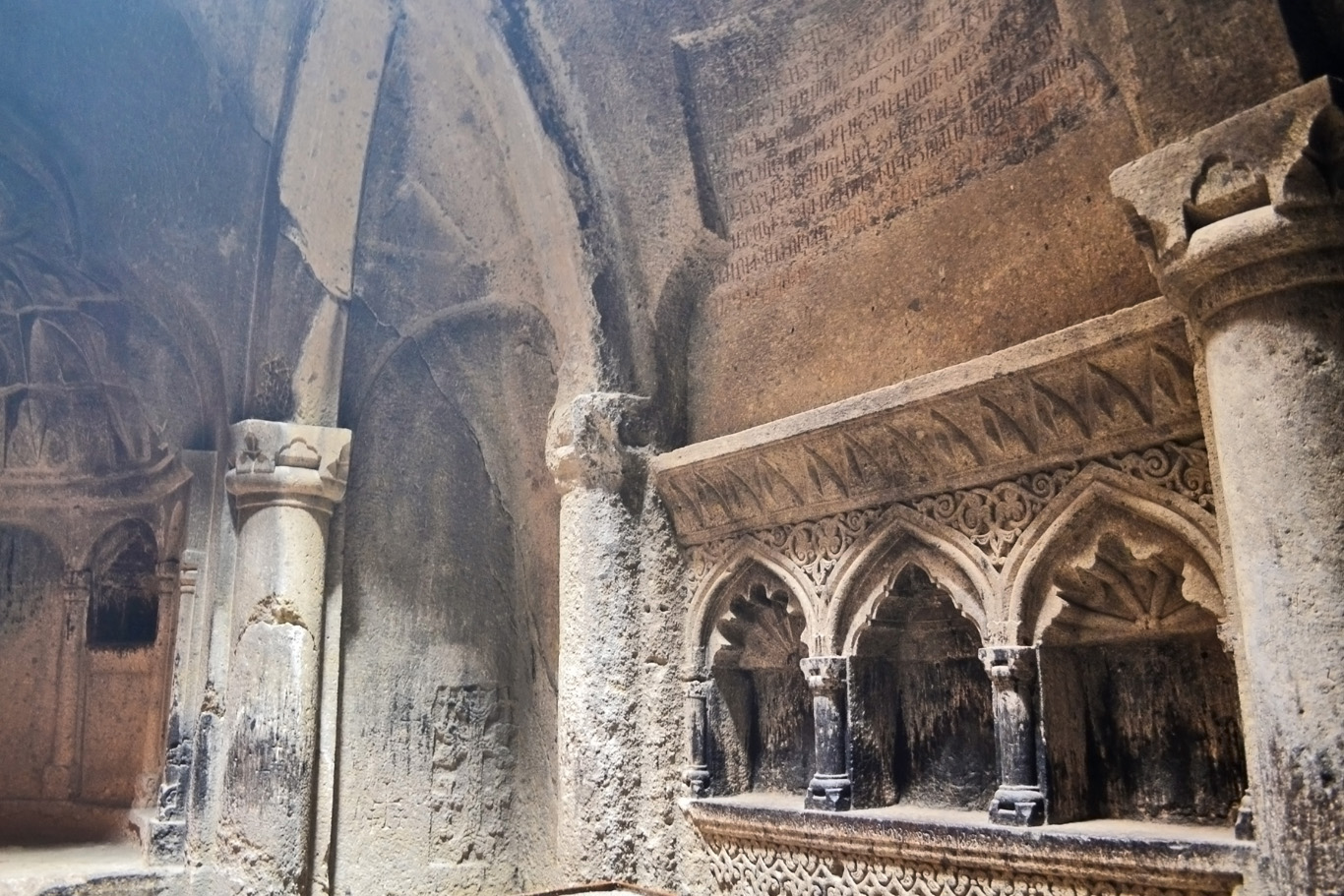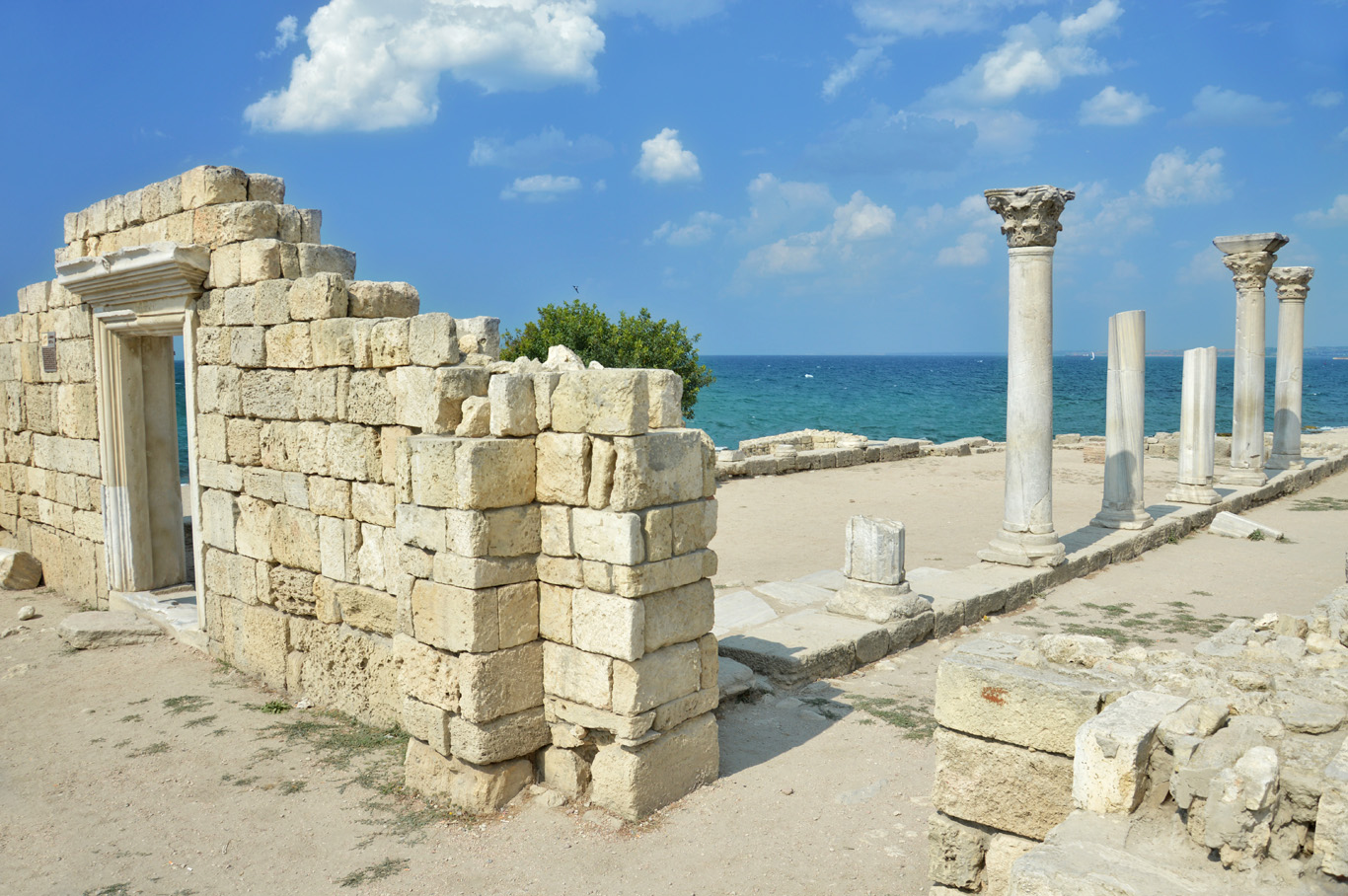The region of Caucasus is not large if the area is taken into consideration. However, it is extremely rich in culture and history, which is concentrated on this relatively small piece of land. Besides Georgia, Armenia is an excellent proof to demonstrate it. Although so close to each other, (journey from Tbilisi in Georgia to Yerevan in Armenia takes only a few hours) those two countries are completely dissimilar. They have distinctly different languages with their own alphabets dating back to antiquity. So, if you like the ancient times and history, this is one of the reasons why you should visit Armenia.
Khor Virap Monastery
Khor Virap Monastery
Khor Virap Monastery
Khor Virap Monastery lies at the foot of Mount Ararat, the famous mountain, where Noah's Ark is believed to have landed after the biblical flood. This peculiar location provides stunning views over the valley and the mount itself with the all-year-round snow covered peak.
Khor Virap
Armenian cemetery at Khor Virap
The monastery can be easily accessed from Yerevan, it's only a short drive (30km) away. It's beauty lies in the symmetrical cruciform design, typical to that region, and the pinkish color of stone used to built it.
Initially, a temple had been erected on the site in the seventh century, and then it had been rebuilt several times until the seventeenth century when it became what it is today. It's the most popular pilgrimage site in Armenia because its history is connected with Gregory the Illuminator who introduced the Christian Faith in Armenia. Hence Armenia became the first country on Earth that had Christianity as the official religion. Gregory was placed in the dungeon of Kvor Virap for thirteen years by the king who hadn't approved his attempts to convert the country to Christianity. However, he survived, supposedly with the help of a widow who had been throwing food into the dungeon. Then, after the king got ill, Gregory was called out of the pit (thanks to the dream of the king's sister that Gregory is still alive and may help) and healed the king.
Old gravestones
Another interesting place in the area, just beside the hill where Khor Virap is situated, is the Armenian cemetery dating back to the fourth century. It is in use up to this day, and one can easily notice the difference between the styles of old and new gravestones. The old ones are basically huge rectangular stone blocks, the new ones have the whole picture of the deceased person engraved on them, sometimes with the details that describe their life, like a machine gun or a car.
Etchmiadzin Cathedral
Etchmiadzin Cathedral is also located near the city of Yerevan. It was constructed in the fourth century by Gregory the Illuminator. The legend has it that he had seen Jesus in his dream, hitting the ground with a golden hammer exactly where the cathedral was was supposed to be built. The name Etchmiadzin can be roughly translated to 'The place where God descended". The cathedral is the oldest state-built church in the world. There are many precious manuscripts and other artifacts inside this temple, among which, the spear that was allegedly used to stab Jesus' heart.
Etchmiadzin Cathedral
The spear that allegedly pierced Jesus's heart
Zvartnots Cathedral
Zvartnots Cathedral
Zvartnots Cathedral - original facade
Zvartnots Cathedral is the third one that is situated very close to the two other temples I have mentioned above. You can easily visit these three sites in one day. The Cathedral had been built in the fourth century and stood for around three hundred years before it collapsed in the tenth century. The reason why this happened is still unknown, most likely it was destroyed by an earthquake. Other sources claim it was an Arab invasion.
What was the design of the temple is also not one hundred percent sure, although the excavations that started as late as the twentieth century revealed its most probable original shape. In contrast to other temples from that period, Zvartnots didn't have the cruciform structure and small side towers, but it was round with three levels one on top of each other. Partly reconstructed, the ruins give the glimpse of its one-time grandeur and the extraordinary talent of its builders.
Zvartnots Cathedral - ruins
Garni Temple
Garni temple is also located close to Yerevan, 30km (19 miles) to the southeast. It is exceptional in the sense that it is the only roman-style temple in Armenia. It dates back to the first century AD but the remains indicate that some parts of the fortifications can come from as early as the third century BC. On the site, there are also: a church, cemetery, royal palace (all destroyed) and the ruins of a bath complex. Fire was lit underneath the baths and the hot air circulated through the canals warming the water inside, even in winter.
There's one interesting fact: on the floor of the bath, there is a mosaic with the inscription in Greek: "We worked for free", implying that the people who had built it didn't receive any payment.
Garni Temple
Cliffs and gorges i the area of Garni Temple
Ruins of the church and palace complex
At Garni Temple with friends
The actual temple had been destroyed by an earthquake in the seventeenth century but the archaeologists managed to find enough remains to rebuilt it to what it was previously. Most of the stone blocks in the temple today are original.
What makes Garni even more worth visiting is the nearby scenery, which is absolutely breathtaking. Surrounded by canyons and gorges, it really must have been the perfect place for the royal family that once lived there.
Mosaic in the baths
Geghard Monastery
Geghard Monastery
While all the temples described here are without any doubt the works of art, this monastery is exceptionally surprising by the fact that most of the main chapel was not built, but literally carved into the wall of a cliff. You can notice that in the pictures from the inside of the chapel where there are no building blocks but just one smooth surface. This site had been established by Gregory the Illuminator in the fourth century, but the main church was built in the thirteenth century. As in other such places (Machu Picchu, pyramids, etc.), it's hard to believe that people, so long ago, without electricity or modern machinery, were able to build such an astonishing construction in a very difficult to access area. Walking from chamber to chamber, and most of them are carved into a stone wall, gives the great feeling of mysticism. The name, "Geghard", means "the monastery of the spear" because the spear that had stabbed Jesus' side was reputedly stored here. Now it is displayed in the museum of Etchmiadzin Cathedral. This place is definitely a must see in Armenia. You will be amazed.
Garni Temple is very near to Geghard Monastery, so it is very easy to visit both places in one day.
Inside of Geghard Monastery
Inside of Geghard Monastery
One of the entirely carved chambers at Geghard
Another carved-in chamber
Geghard Monastery
Related Posts
Copying without permission is not allowed. If you wish to use any of the site's content (photos or text) or work with us, please contact us.
We welcome questions, advice, support or criticism. However, spam comments will be removed.




























